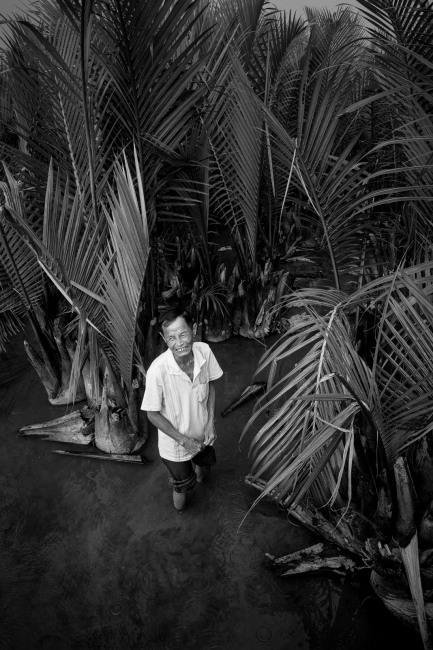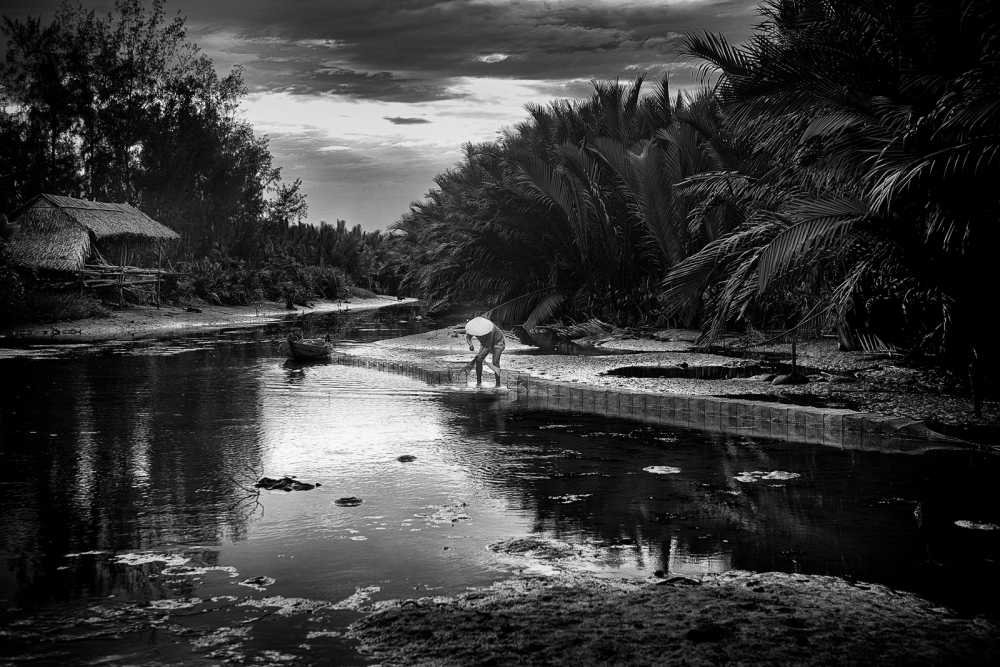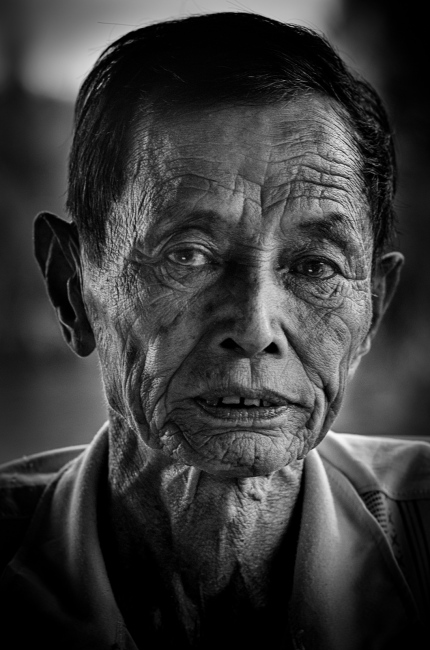Public Story
Portrait of an Enemy
On March 8, 1965, Trâń Văn Chôńg’s enemy landed thirty kilometers north of his home. Until then, life was peaceful and predictable in the fishing village where he was born. But Trâń knew it wouldn’t last forever, the commander had warned them a year ago when he came to their village to recruit Viet Cong sympathizers and soldiers. Trâń was 22 years old then and one of 112 soldiers the commander had recruited. The village was divided into 7 cells, each cell containing 15 male soldiers and one female nurse who was responsible for the cell’s medical needs. The commander told them they didn’t have to leave the village, they could remain living there, appearing like normal villagers, making it difficult for the Americans to detect who were Viet Cong. Periodically the commander returned to give them training in guerrilla warfare tactics, usually one week at a time and always at night.
Eventually, Trâń and the other soldiers from his village became an enemy that the American soldiers feared because they could not see, feel or touch them. The warfare tactics they employed foiled many military initiatives the Americans devised. In 1966, the Americans established a Marine base two kilometers from Trâń’s village. One day a group of soldiers from the base came to his village and told the local people that they had to leave because they were going to bomb the village in order to eradicate the Viet Cong hiding there. Within a few hours, the village was abandoned and a tank rolled in and razed the entire area. Trâń and his fellow soldiers fled.
In the middle of the Thu Bon River there was a vast, dense swamp, known as Coconut Grove. This is where Trâń and the other soldiers in his cell lived, in view of the Marine base, but hidden within the dense foliage. They built mud shelters, 2 meters underground, where they hid during the day then emerged in the night to relentlessly attack their enemy. The 15 soldiers in Trâń’s cell had two rifles to share among them, but their training had prepared them how to secretly confiscate the enemy’s weapons and use these stolen arms against them. Trâń’s cell stayed in the swamp, fighting their enemy for 6 years. When the war finally ended, thirteen soldiers in the cell, including the nurse, had died, only three survived, Trâń, Lê Trac and Huýnh Luôn.
So, who is your enemy? With the rampant proliferation of violence and terrorism in our world today, I wonder whether the rationale and rhetoric used to define a Vietnamese enemy is still the political paradigm of the developed world? If this is true, I wonder how this can be revised? If I had been an US soldier in the Vietnam War, I would have had to fight these men that I am photographing. Yet from my experience with these soldiers today, I can never imagine them as my enemy. It is my hope that this series will demonstrate how a potential enemy may also be a potential friend, and inspire a fresh perspective, a new paradigm, a paradigm shift.












